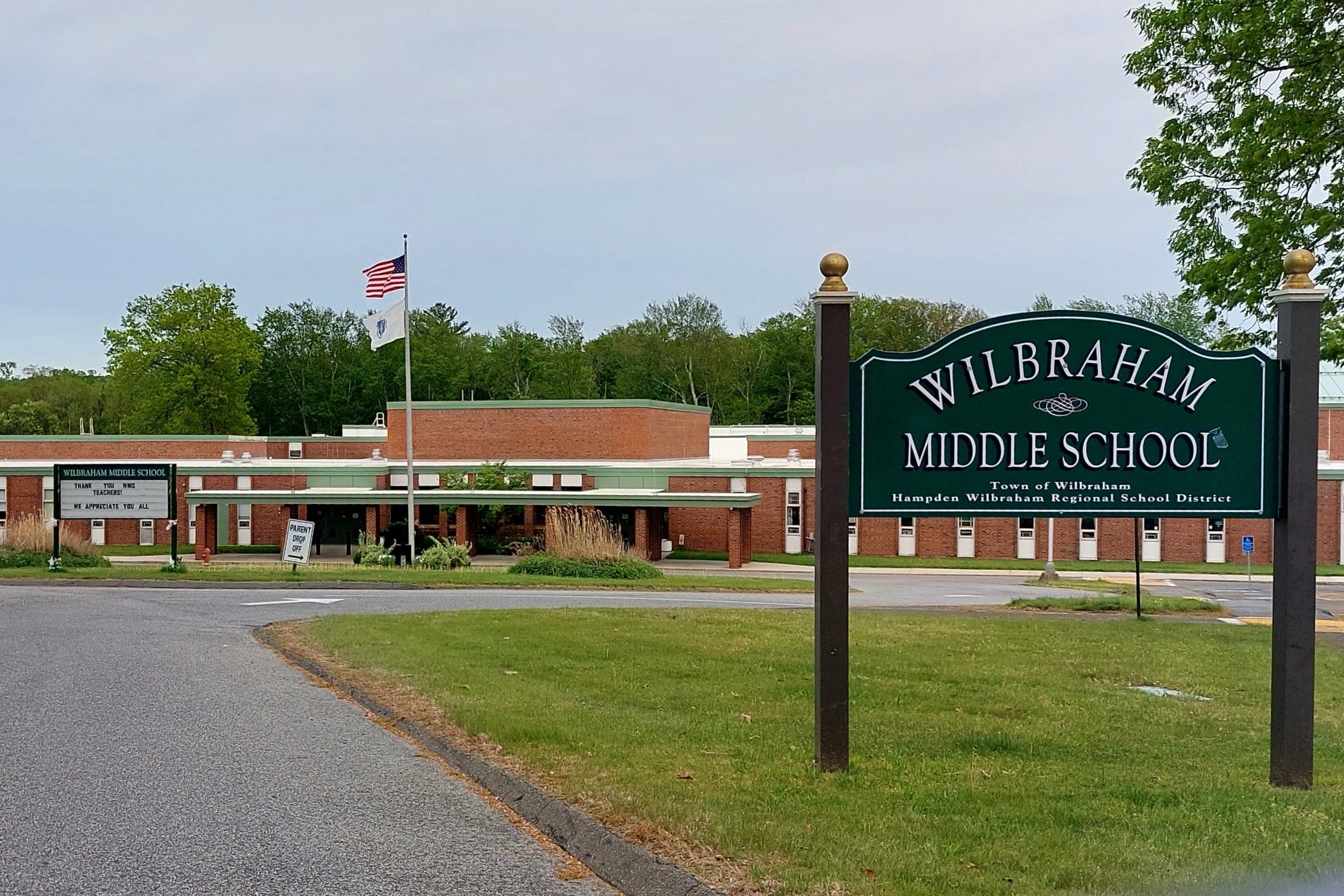Wilbraham Middle School
Reminder Publishing file photo
HAMPDEN — The Hampden Selectboard and Wilbraham Select Board once again met on April 2 to discuss updating the regional agreement governing the Hampden-Wilbraham Regional School District.
The conversation has mainly revolved around who will pay for upgrades at the middle school. The main discussion is about that as a regional district, there are some questions about how the capital costs should be split when Hampden has far less students in the schools with questions surrounding the middle school’s condition.
A drafted revision to the regional agreement states that grades 6-12 are regional and that any building which houses all students in those grades educated within the district is to be treated as a regional school.
Wilbraham Middle School, which all middle school students attend, is owned by Wilbraham and leased to the district. The town is responsible for the capital costs for that property.
The meeting, which took place at the Hampden’s Town House auditorium, started with Wilbraham Select Board Chair Susan Bunnell summarizing the feelings she and her board expressed at its meeting the night prior.
She said, “I thought we closed out at the end of our last meeting along these lines that we feel like the way the regional agreement is currently drafted is something with which we are relatively comfortable with and very willing to acknowledge and consider the concerns that the Hampden board has.”
She also acknowledged the Wilbraham Select Board is in general agreement specifically around the issue of the sharing of the middle school.
“From our thinking, it already should have been treated as a regional building because it’s got all of our middle schoolers in it,” she said.
Capital costs for regional schools, such as Minnechaug Regional High School, are split in proportion to each town’s share of enrollment.
Hampden Selectboard member John Flynn said the group has talked about equity. The way it is set up for Minnechaug, he said nobody has any issues with.
He said, “I think the issue here is that if the town of Hampden participates in an upgrade or repair, putting capital into it, is there a return on that equity purchase if you will.”
Hampden Town Administrator Brian Domina created a draft proposal after sharing some thoughts with the Hampden Selectboard about potential cost sharing arraignments for the Wilbraham Middle School.
Domina said an arrangement where Hampden could contribute to capital improvements of the building with a defined useful life for a defined term of years could work.
An example Domina explained is, “Hypothetically in this example, it’s 10 years and really just to simply put it, if there’s any remaining years left on that capital improvement when Hampden students are no longer in the building, then Hampden would be entitled to a refund in proportion to the cost per year that Hampden contributed for the capital improvement times the remaining years of the useful life of the equipment.”
This hypothetical assumes that Hampden would pay up front for the capital improvement and that it would be in the form of a refund.
“That’s the idea,” Domina said, “It provides Hampden with no equity and equity so to speak in ownership of the building, which I think was [the] sticking point in the last conversation and it addresses Hampden concern that they’re not investing in the building, and I guess for lack of a better term, enriching Wilbraham in the sense that the building is in really great shape when it’s sold so it has more value.”
This is a general framework and Domina acknowledged it would not work quite as well if there were shared debt for capital improvements. More thought would have to go into that scenario, but in terms of capital improvement where Hampden pays up front, “I think that might work,” Domina stated.
Wilbraham Select Board member Michael Squindo said this is a good starting point for a framework, but explained his initial response revolved around “an absolute return relative to the upfront investment based on the time left of the useful life doesn’t account for the depreciation value of any capital improvements.”
With the example given, Squindo said if $200,000 is the Hampden share, that’s $20,000 a year and at the end of eight years, there’s a depreciation.
Another talking point was excluding pre-existing items which Hampden Selectboard Chair Donald Davenport joked was “his favorite item.”
He stated, “The reason is because [Wilbraham] has done it before. In 2016 when the original first amendment were a thing, you carved out the roof that said that Hampden would not be responsible for the roof and that Hampden wouldn’t be responsible for other things.”
Before figuring anything else out, Davenport said they first need to try to sit down with the Regional Committee and figure out what capital improvements are needed within the next five, 10, 15 and 20 years.
There are still several months to agree on the details before fall Town Meeting when the regional agreement will come to a vote.
Davenport said both boards will look over the proposals, report back to their respective town administrators and the next meeting between the boards is scheduled for Tuesday, April 22 at 5:30 p.m.



